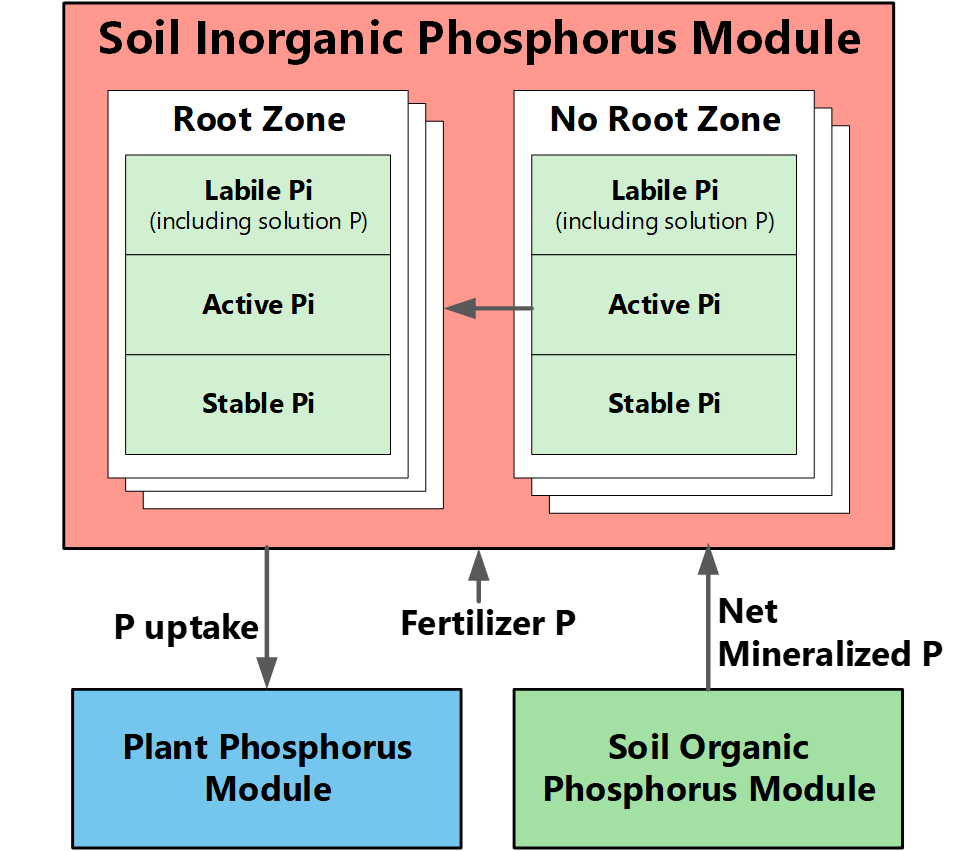The soil inorganic phosphorus model in DSSAT-CSM and the flow of P between other modules is represented by the figure below.

Because phosphorus is relatively immobile in most soils, the soil volume is divided between soil which is near roots and soil that is too far for roots to gain access to the phosphorus. The radius which determines these volumes are species-specific. As roots proliferate in a layer, soil mass, with the proportional mass of P, are transferred from the “no root zone” to the “root zone”.
Within both root and no-root zone, three inorganic P pools are maintained: labile, active, and stable. Flows of P into the soil inorganic pools are from fertilizer, which may be placed in the root zone as banded or injected fertilizer, and P released from mineralization of organic matter. P is lost to inorganic pools through uptake by the plant.
Plant available P is a portion of the labile P in the root zone which is in solution. The amount of plant available P is dependent on soil characteristics, root distribution, and soil water content.
First order kinetics are used to move P between the stable, active and labile pools.
Initializing soil P pools
Initializing soil P pools can be difficult but is critical to modeling soil P processes. As a minimum, users must specify the extractable P in each layer of the soil and the method used for soil extraction (e.g., Bray, Mehlich, etc.). It is highly recommended that users also have pH and total organic carbon. The P process routines are written so that the model will work with just these parameters, but other parameters are used if available.
Please refer to the “User’s Guide for Soil Phosphorus model data requirements” for more detailed information on initializing soil P for DSSAT-CSM.
References
Dzotsi, K.A., J.W. Jones, S.G.K. Adiku, J.B. Naab, U. Singh, C.H. Porter, A.J. Gijsman. 2010. Modeling soil and plant phosphorus within DSSAT. Ecological Modelling. 01/2010.
